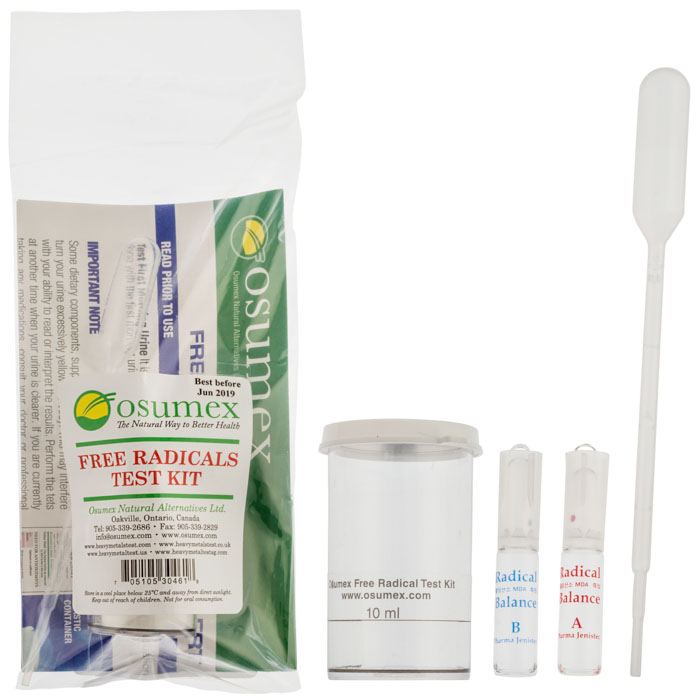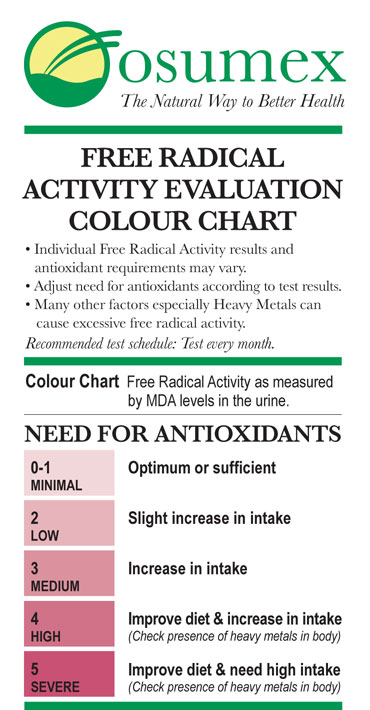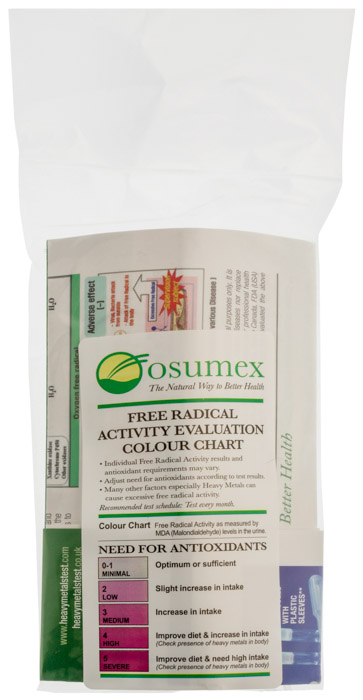|
| Free Radicals - where and how formed |
| Free Radicals cause aging |
|
|
|
Free Radicals - Where and How Formed
Free radicals are highly reactive molecular fragments that can damage cell membranes and the internal organelles of the cell.
Free radicals are created in the body internally in the following manner:
- The primary source is from our body during the energy production process within the cells. 98% of the oxygen we breathe is used within
our cells in the production of energy. The resultant effect of this energy producing activity is that a very small amount of oxygen that was
not used losses electrons creating free radicals.
- Another important source which creates lots of free radicals is the presence of toxic heavy metals in the body especially those caught up
in the cellular tissues. All transition metals with the exception of copper, contains one electron in their outermost shell and can be considered
a free radical. Copper, although having a full outer shell of 2 electrons, loses its electron easily and can be considered a free radical too. The
following metals are, however, major free radicals creating agents in the body - mercury; calcium; aluminium; lead; chlorine; iron; cadmium
- From foods that we consume that may have a destructive potential. An example would be fried foods in high temperature, which causes the bonds in
the molecule to become unstable.
- During normal metabolism of fat, carbohydrates and proteins
- Stress especially oxidative stress. All chemicals and some endocrine hormones create free radicals
- Low blood supply - generally occurs during heart attacks and strokes - forms free radicals.
Free Radicals are also created externally in the following situations:
- Environmental contaminants such as pollution. Cigarette smoke in particular increases free radical load tremendously
- Ionizing and ultraviolet radiation such as from overexposure to sunlight and prolonged exposure to x-rays
- Excessive or over-exercising
- Toxic chemicals and pesticides
- Petroleum based products
- Unhealthy foods - processed foods, fried foods, barbecued and charbroiled foods
- Toxic products found in furniture polish and paints - eg., toluene, benzene and formaldehyde
The free radicals created burn holes in our cellular membranes that weaken tissues and organs in our body. As the damage continues unchecked, the body becomes
"rusty" and less able to defend itself against problems such as cancer, hardening of the arteries, premature aging and other health issues.
Looking for an effective antioxidant to control excessive free radicals?
Consider Osumex Flax Hulls which has a high
ORAC** value of 19,600 and a powerful antioxidant. It is also a most nutritious fibre!
**ORAC (Oxygen Radical Absorbance Capacity) is a method of measuring antioxidant capacities of different foods
Osumex Free Radical Test kit - see sample kit below



Malondialdehyde (MDA) is a by-product of free radical activity and this is what the test kit measures.
It is recommended that you test at least once a week, if excessive free radical activity is found, until it is brought under control, or
once a month or at least once every few months to make sure free radicals in the body are not running rampant!

The above information is provided for general
educational purposes only. It is not intended to replace competent
health care advice received from a knowledgeable healthcare professional.
You are urged to seek healthcare advice for the treatment of any
illness or disease.
Health Canada and the FDA (USA) have not evaluated these
statements. This product is not intended to diagnose, treat, cure, or prevent
any disease.
|


